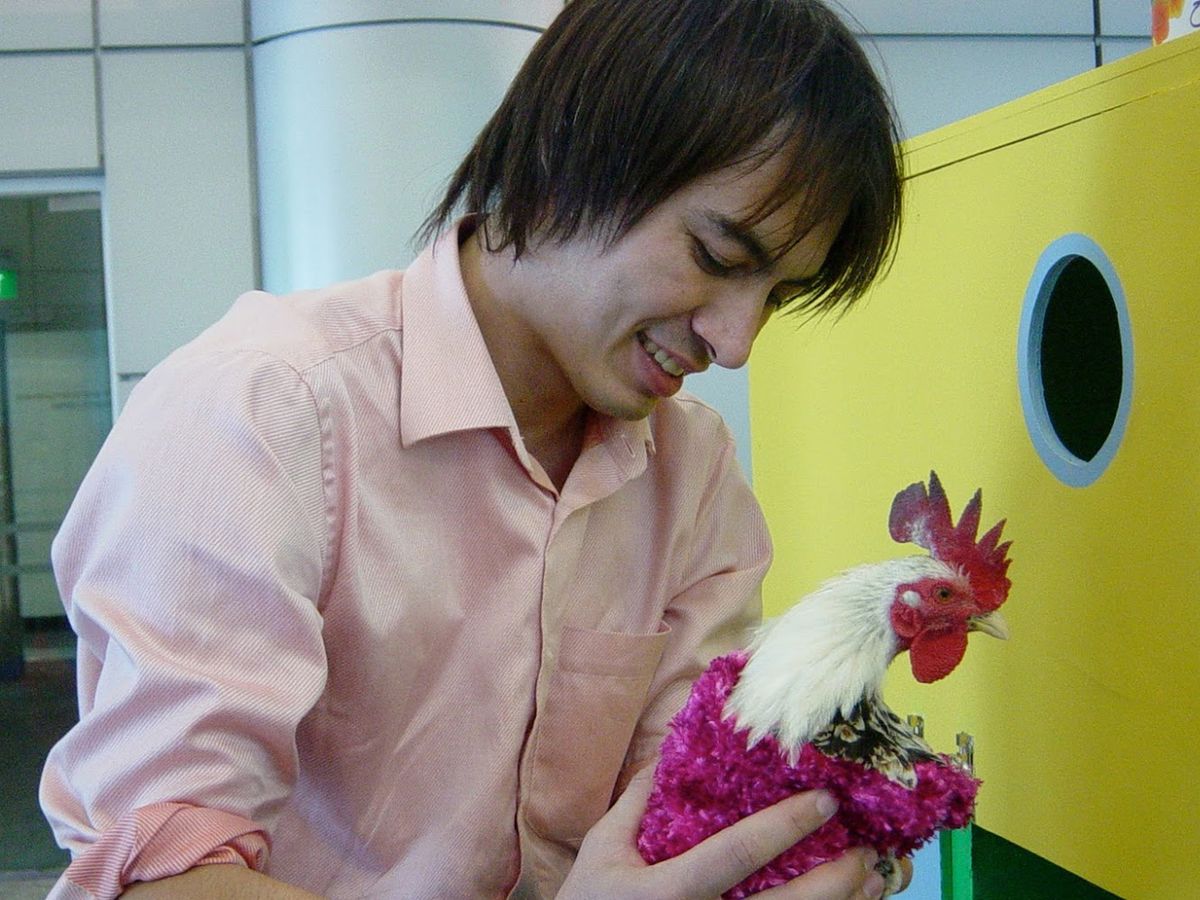Adrian David Cheok, the first person to hug a chicken via the Internet, has some advice for creative engineers trying to make their own mark on history. Rule one: Embrace your idiosyncrasies. Rule two: Get your hands dirty. Rule three: Don’t worry about the critics.
His 2005 Poultry Internet project showcased all these strategies. Cheok, then an associate professor of electrical and computer engineering at the National University of Singapore, was fascinated by the notion of transmitting not just multimedia but also sensations over the Internet. He decided to start with haptics, the technology of touch, by building a system that would let pet owners send their lonely animals a pat during a busy workday at the office.
Growing up in Adelaide, Australia, Cheok had often played with the chickens kept by his grandfather, so he decided to focus on poultry (rule one). He built haptic jackets for the chickens himself (rule two), embedding them with vibrating elements. Tinkering taught him just how difficult it is to produce a gentle, humanlike touch. “The system develops as you build it,” Cheok says. “I see research as iterative—you’re learning from what you’re making.”
The chicken’s jacket was connected wirelessly to the Internet, and its coop was rigged with a webcam. Then, in his office, Cheok patted a chicken doll that had touch-sensitive sensors, and the squeeze was transmitted to the live bird while he watched. The chicken had been hugged.
Cheok says some of his colleagues weren’t impressed by this unorthodox project: “There were some of the faculty who thought, this is not engineering, let alone research,” he says. But he carried on (rule three) and found appreciative audiences at both international conferences and in the coop. In an experiment with a flock of chickens, 70 percent chose to enter the room where their little jackets would be put on them instead of a room where they’d be left alone.
His idiosyncrasies notwithstanding, Cheok’s career had a typical beginning. As a boy he played with radio kits and programmed his friend’s Apple II computer; at the University of Adelaide he earned a bachelor’s degree and then a Ph.D. in electrical and electronic engineering. He took a job at Mitsubishi Electric in 1996 because Japan was the mecca for technology, he says. In Mitsubishi’s Osaka lab he spent a few years working on massive projects like controllers for a new high-speed train. But he chafed at the rigid company structure, and when the National University of Singapore called about a professorship, he took it.
Academia has been a good fit. In 2008 he moved back to Japan to join Keio University’s Graduate School of Media Design, where he has a mandate to engage in blue-sky research and nurture the next generation of creative innovators. “Instead of having your tech guy over here and your creative guy over there, we need them to coexist in the same brain,” he says.
He’s still dedicated to building multisensory communication gadgets, which he thinks will usher in the next stage of the Internet. “I believe we need to move from the age of information, which we have reached today, into the age of experience,” he says. A 2007 project extended the chicken research to children: The Huggy Pajama allows faraway parents to give their kid a remote good-night hug by pressing an input module’s buttons. In user surveys, parents and children reported higher levels of emotional engagement thanks to the huggy system. Now Cheok’s working on a commercial product that would let a user send a squeeze—and a warm thought—to the ring on a loved one’s finger. He hopes to have a prototype ready by the start of 2013.
Haptics are just the beginning. Cheok has a “digital lollipop” in the works that electrically and thermally stimulates the tongue to produce basic flavors—bitter, sour, salty, sweet. He dreams of a system that would let friends in Paris send you a taste of their wine over the Internet. “The ultimate Internet,” he says, “will integrate all our senses.”
Eliza Strickland is a senior editor at IEEE Spectrum, where she covers AI, biomedical engineering, and other topics. She holds a master’s degree in journalism from Columbia University.



